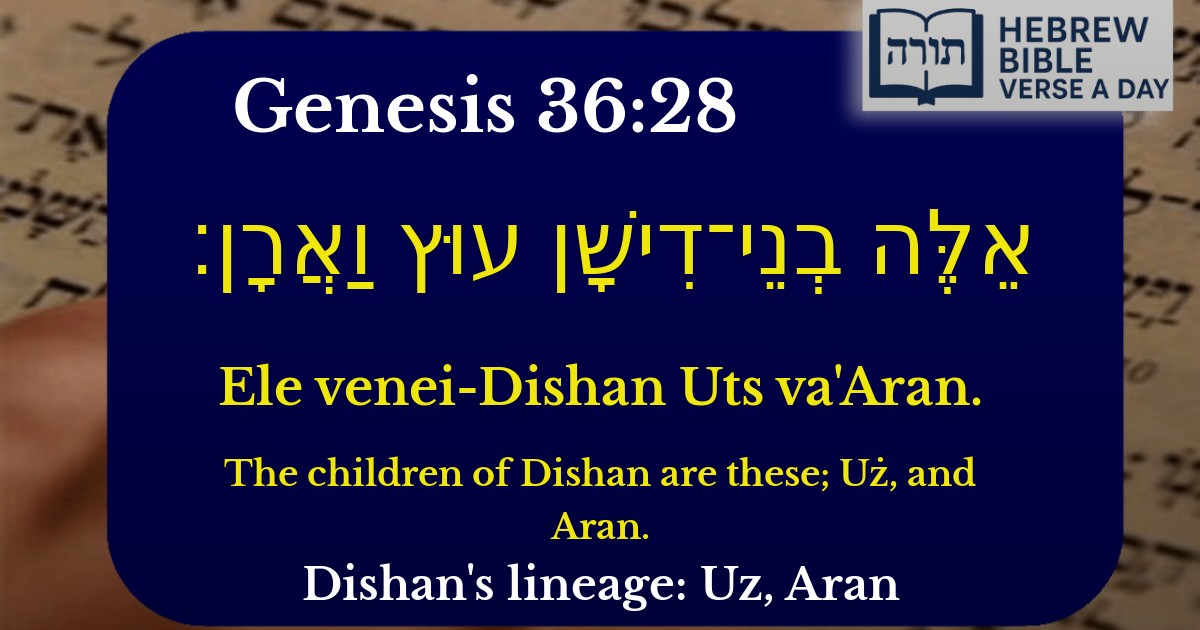Join Our Newsletter To Be Informed When New Videos Are Posted
Join the thousands of fellow Studends who rely on our videos to learn how to read the bible in Hebrew for free!
Hebrew Text
אֵלֶּה בְנֵי־דִישָׁן עוּץ וַאֲרָן׃
English Translation
The children of Dishan are these; Uż, and Aran.
Transliteration
Ele venei-Dishan Uts va'Aran.
Hebrew Leining Text
אֵ֥לֶּה בְנֵֽי־דִישָׁ֖ן ע֥וּץ וַאֲרָֽן׃


Context in Sefer Bereishit
The verse (Bereishit 36:28) lists the descendants of Dishan, a son of Seir the Horite, who inhabited the land of Edom before the children of Esav settled there. This genealogy appears in the broader context of the Torah's account of Esav's lineage and the indigenous Horite tribes.
Rashi's Commentary
Rashi notes that the names "Uż" and "Aran" are listed as the sons of Dishan, continuing the Torah's detailed enumeration of the Horite clans. He explains that these genealogies are recorded to demonstrate how the land was transferred from the Horites to Esav's descendants, fulfilling the divine promise that Esav would inherit Mount Seir (Devarim 2:12).
Ibn Ezra's Insight
Ibn Ezra observes that the Torah meticulously documents these names to establish the historical legitimacy of Israel's later claim to neighboring territories. By recording the Horite lineages, the Torah provides a legal and historical basis for understanding the region's ownership transitions.
Midrashic Interpretation
The Midrash (Bereishit Rabbah 82:15) connects these names to broader themes:
Halachic Significance
Rambam (Hilchot Melachim 6:1) references these genealogies when discussing the Torah's laws of conquest, noting that the dispossession of these nations was permitted only when they were idolatrous and when Israel followed proper protocol for settlement.
Chizkuni's Additional Note
Chizkuni points out that the unusual phrasing "אֵלֶּה בְנֵי־דִישָׁן" ("These are the children of Dishan") rather than simply listing the names serves to emphasize the completeness of the record, leaving no doubt about the familial relationships.